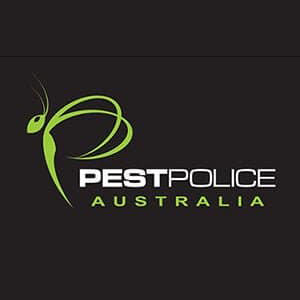Climate change, an undeniable reality of our time, has far-reaching consequences that extend beyond melting ice caps and unpredictable weather patterns. One often overlooked aspect is its profound impact on pest control. As global temperatures rise and weather patterns become increasingly erratic, the dynamics of pests and their interactions with the environment are undergoing significant transformations.
This blog will delve into the intricate relationship between climate change and pest control, exploring how shifts in temperature, precipitation, and other climatic factors influence the behaviour, distribution, and abundance of pests. By unravelling this connection, we aim to shed light on the challenges faced by pest control professionals and the innovative strategies emerging to address the evolving landscape of pest management in the era of climate change.
Join us on this journey as we navigate the intersections of climate change and pest control, understanding the implications for our ecosystems, agriculture and the broader implications for sustainable living on our planet.
Explanation of Climate Change and Its Causes
Climate change, a complex and pressing global issue, refers to long-term changes in the Earth’s climate, particularly shifts in temperature and weather patterns. At its core, climate change is driven by the increase in greenhouse gases, such as carbon dioxide (CO2), methane (CH4), and nitrous oxide (N2O), in the Earth’s atmosphere. The primary contributors to this rise in greenhouse gases are human activities, including the burning of fossil fuels, deforestation, and industrial processes.
The burning of fossil fuels, such as coal, oil, and natural gas, releases large amounts of CO2 into the atmosphere. Deforestation, on the other hand, reduces the number of trees that can absorb CO2 through photosynthesis. Additionally, industrial activities release other greenhouse gases, contributing to the overall warming of the planet.
Effects of Climate Change on Ecosystems
The impacts of climate change reverberate through ecosystems, disrupting the delicate balance of biodiversity and ecological processes. Rising temperatures have direct consequences on various facets of ecosystems, affecting flora, fauna, and their interactions.
Here are some of the other effects of climate change on ecosystems:
- Altered Habitats: Changes in temperature and precipitation patterns lead to shifts in ecosystems and habitats. Species that are unable to adapt or migrate face the risk of extinction as their natural environments become inhospitable.
- Sea Level Rise: The warming of the planet results in the melting of glaciers and polar ice caps, causing sea levels to rise. Coastal ecosystems are particularly vulnerable, with increased flooding and erosion threatening the existence of vital habitats.
- Ocean Acidification: The absorption of excess CO2 by the world’s oceans leads to acidification, negatively impacting marine life. Coral reefs, crucial for biodiversity, face bleaching and degradation, affecting the myriad species that depend on them.
- Extreme Weather Events: Climate change intensifies the frequency and severity of extreme weather events, including hurricanes, droughts, floods, and wildfires. These events disrupt ecosystems, leading to biodiversity loss and the collapse of delicate ecological relationships.
Understanding the intricacies of climate change and its effects on ecosystems is essential for developing effective strategies to mitigate its impacts. As we explore further, it becomes evident that these changes also have cascading effects on pest dynamics, influencing their behaviour and distribution in ways that challenge traditional pest control methods.
Relationship between Climate Change and Pest Control
Climate change, propelled by human activities, is reshaping the very fabric of our ecosystems. Beyond its well-documented impacts on weather patterns and biodiversity, climate change profoundly influences the behaviour, distribution, and abundance of pests. Let’s explore the impact of climate change on pest population dynamics, changes in pest behaviour and distribution patterns, and the effectiveness of conventional pest control methods.
Impact of Climate Change on Pest Population Dynamics
Climate change acts as a powerful driver influencing the population dynamics of pests. As temperatures rise and precipitation patterns shift, these environmental alterations create favourable conditions for the proliferation of certain pest species. Warmer temperatures, in particular, can accelerate the reproduction rates of many pests, leading to more rapid population growth.
- Accelerated Life Cycles: The increased temperatures associated with climate change often result in shortened life cycles for many pests. This means quicker generations and higher reproductive rates, allowing pest populations to surge in numbers.
- Expanded Geographic Range: As temperatures in previously inhospitable regions become more suitable, pests are expanding their geographic range. This migration can introduce new pest challenges to historically unaffected areas.
Changes in Pest Behavior and Distribution Pattern
The intricate dance between climate and pest behaviour is a critical aspect of understanding the evolving landscape of pest control. Climate change influences the geographic distribution of pests and alters their behaviour in response to shifting environmental conditions.
- Altered Migration Patterns: Changes in temperature and weather patterns can impact the migration routes of pests. Some species may extend their range into new territories, affecting ecosystems and agricultural regions unprepared for their presence.
- Shifts in Feeding Habits: Climate-induced changes can influence the availability of food sources for pests. This, in turn, may lead to shifts in their feeding habits, potentially causing damage to different crops or plant species than before.
Effects of Climate Change on the Effectiveness of Pest Control Methods
The traditional arsenal of pest control methods faces new challenges due to climate change. The dynamic nature of pest populations and their behaviour necessitates a reevaluation of existing control strategies.
- Resistance and Adaptation: Pests, known for their adaptability, can evolve resistance to certain pesticides or control measures. The changing climate may further accelerate the development of resistance, rendering some conventional pest control methods less effective over time.
- Unpredictable Pest Outbreaks: Climate-induced factors such as extreme weather events can trigger sudden and unpredictable pest outbreaks. These events can overwhelm conventional pest management strategies, demanding more agile and responsive approaches.
Understanding the intricate relationship between climate change and pest control is crucial for devising resilient and sustainable strategies. As we navigate the challenges this interconnected dynamic presents, innovative solutions that integrate climate-smart pest management practices become imperative for securing global food security and ecological balance.
Strategies to Adapt Pest Control Practices to Climate Change
As climate change reshapes our environment, the field of pest control faces unprecedented challenges. Traditional methods are being tested, prompting the need for adaptive strategies that not only address the evolving dynamics of pest populations but also align with the principles of sustainability and resilience. Here, we explore key strategies to adapt pest control practices to the changing climate.
A. Integrated Pest Management (IPM) Strategies
- Diversified Approaches: IPM emphasises a holistic approach that integrates various pest control methods. By combining biological, chemical, and cultural control measures, IPM creates a comprehensive strategy to manage pests sustainably.
- Monitoring and Early Detection: Regular monitoring of pest populations allows for early detection of changes in their dynamics. This proactive approach enables swift responses, preventing the escalation of pest-related issues.
- Sustainable Agriculture Practices: Implementing sustainable farming practices, such as crop rotation and polyculture, contributes to natural pest control. These methods enhance biodiversity, creating an environment where natural predators can help regulate pest populations.
B. Use of Climate-Adaptive Pest Control Methods
- Resistant Crop Varieties: Developing and planting crop varieties resistant to prevalent pests in a changing climate can provide a resilient foundation for pest control. This approach reduces the reliance on chemical pesticides.
- Habitat Modification: Modifying agricultural landscapes to create less favourable conditions for pests can be an effective strategy. This may include altering irrigation practices, managing crop residues, and adjusting planting times.
- Climate-Responsive Pest Forecasting: Utilising climate data to predict pest outbreaks enables farmers and pest control professionals to implement preemptive measures. Early intervention, informed by climate forecasts, can mitigate the impact of pest infestations.
C. Role of Technology in Climate-Smart Pest Control
- Remote Sensing and Data Analytics: Advanced technologies, including satellite imagery and data analytics, enable real-time monitoring of environmental conditions. This information aids in predicting potential pest threats and optimising control strategies.
- Precision Agriculture: Precision agriculture technologies, such as smart sensors and automated systems, allow for targeted application of pest control measures. This reduces the overall environmental impact while maximising efficacy.
- Smart Pest Control Devices: The development of innovative devices, such as automated traps and robotic systems, enhances the efficiency of pest control. These technologies respond dynamically to changing environmental conditions, optimising pest management efforts
Adapting pest control practices to climate change requires a blend of innovation, flexibility, and sustainable practices. Embracing integrated approaches, leveraging climate-adaptive methods, and harnessing the power of technology are pivotal steps toward forging a climate-smart future for pest management. As we navigate this ever-evolving landscape, these strategies offer a roadmap to cultivate resilient ecosystems and secure global food systems in the face of environmental change.
Embracing Resilient Pest Control with Pest Police
With the impact of climate change on pest populations, it is vital to adapt pest control practices. Pest Police offers year-round pest control services using integrated pest management strategies and climate-adaptive methods. Our expertise and commitment to sustainability ensure effective pest control while minimising environmental harm. Contact us today for all your pest control needs, and trust our reliable, environmentally friendly solutions.

